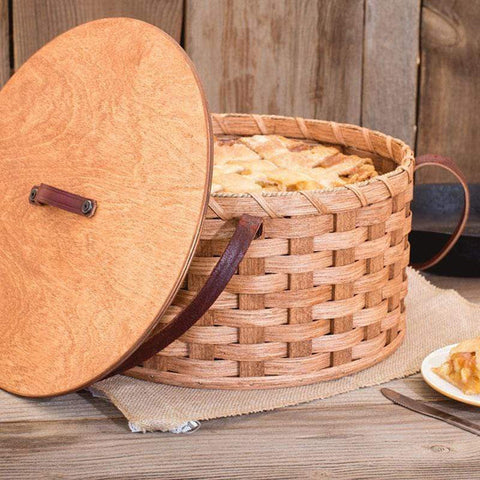The Amish are a deeply devout and highly conservative Christian denomination. They live simple lives, separate from modern society and its technological advances.
Their stance on the sanctity of Amish adult baptism and traditional family roles is quite evident, but what do the Amish believe happens after death?
As a community whose culture is heavily influenced by their faith, they have firm beliefs about what happens beyond this life. Yet this is a part of Amish life that is not well-known to outsiders.
So, keep reading to discover the Amish approach to death rites, funeral customs, and more.
What this article covers:
- Amish Beliefs on Death
- Amish Funeral Traditions
- Amish Funeral Dress
- Do the Amish Have Wakes Accompanied By Food?
Amish Beliefs on Death
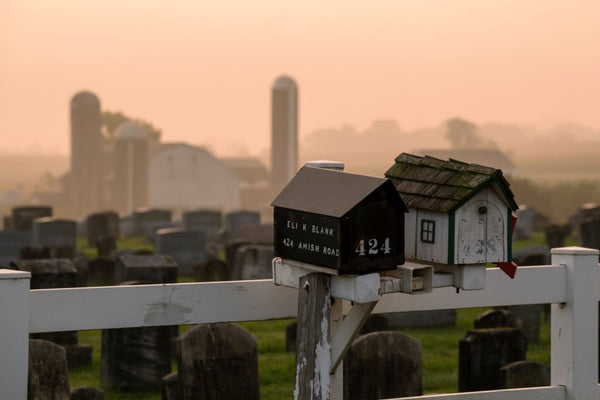
The Amish beliefs on death are tied to their beliefs about God. Therefore, Amish attitudes to death mirror those that they have towards their daily lives. And that is, at all times they should be humble and subject to the will of God.
God’s Will Is Without Flaw
According to the Amish religion, as the Creator of all things, God alone decides when a person’s life should end. The Amish do not question God’s wisdom or authority on this matter. They trust in the omniscience of God’s knowledge.
This trust in God’s will extends to all areas of their lives. It’s why the Amish don’t believe in insurance. Any disaster is seen as an act of God, and even if not fully understood by the community, accepted as part of his Divine Plan. This is one of many Amish symbols of devotion to God’s overarching plan for their existence.
The Dead Go on to the Afterlife
Naturally, the Amish grieve the loss of a loved one, as anyone does, but this grief is tempered by their belief that the deceased leave the physical world to be with God in the spiritual afterlife.
This is why an Amish funeral isn’t entirely a sad affair, but also a cause for celebration. Death is seen as the gateway to life with God in Heaven.
A Reminder to Live Simple Lives, Dedicated to God
This belief in the afterlife and the order of God’s will in the chaos of the world brings them great comfort and makes the pain of loss more bearable.
It also inspires those left behind to live more pious lives in preparation for their own departure to God’s realm. In this way, every death serves as a lesson to the community about the importance of leading a righteous life.
Amish Funeral Traditions
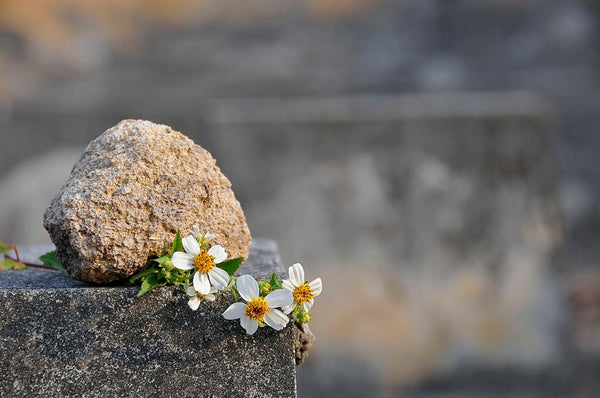
Amish people have their own funeral traditions, just like any other community.
However, they differ from most modern funeral and burial customs.
The Community Prepares the Body for Burial
The members of the community prepare the body of the deceased for burial.
They follow the rules set out in their book of rules, the Amish Ordnung. However, If the state they reside in requires otherwise, they will comply.
Otherwise, the body is washed and prepared for burial while family members of the departed make the deceased’s burial clothes.
Bodies Are Embalmed
Because the body will not be refrigerated in a morgue and will be viewed in an open casket, it should be embalmed.
Old Order Amish beliefs sometimes differ on the issue of embalming. In ultra-conservative communities, embalming is not practiced. Instead, the body is kept cool on ice, and the funeral and burial process may be hastened.
However, in most Amish communities, a mortician will collect and transport the body to the local mortuary for embalming. However, it is returned to the community a few hours later.
Burial Takes Place Three Days After Death
Amish rules dictate that burial always takes place three days after a death. In the days leading up to the burial, the community takes care of all the arrangements.
The body is prepared, the coffin is built, funeral services are conducted, and the grave is dug within these three days.
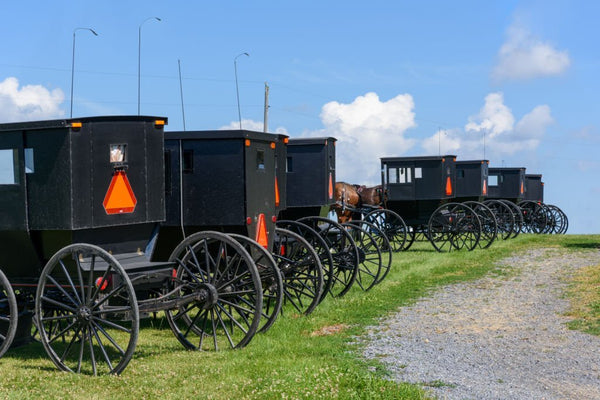
Amish Coffins Are Unadorned
Amish coffins are built by men in the community, using pine wood. They’re purely functional and echo the humility displayed by all Amish things.
The coffins aren’t decorated and they have none of the extra trappings, padded interiors or any other adornment, we see at most modern funerals. They don’t even have handles!
Requirements and Duties of the Pall Bearers
Four pallbearers are chosen, and their marital status must match the deceased.
Their duties include preparing the coffin room for open casket viewing (where it awaits the burial), transporting the coffin, and carrying the deceased to the grave.
There Are Three Stages of Mourning
The mourning period consists of three stages: the viewing, the funeral service, and the burial.
During the viewing of the body, it’s displayed in an open casket in a room that’s been made bare. Community members may view the body to pay their final respects. This viewing of the body lasts for 24 hours.
The funeral service follows. The pallbearers carry the coffin to the horse-drawn hearse and transport it to the funeral, which is held in an open community space. Thereafter, the coffin is carried to the grave.
No Eulogy at the Funeral Service
The funeral service will take place in the home of the deceased, or a barn. All members of the community are expected to attend.
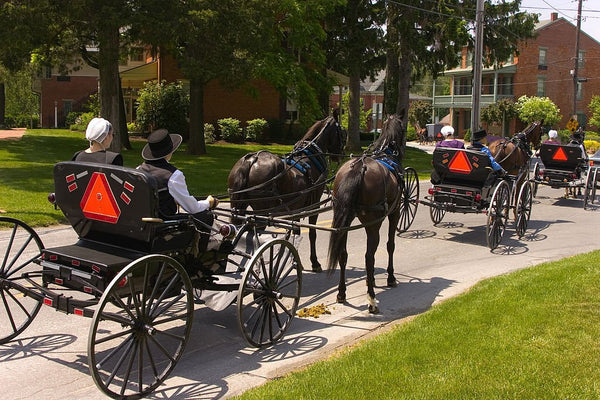
Because children can become restless, a childminder may occupy them outdoors.
Amish Bible verses about the afterlife are read during the service, and praise and worship are integral aspects of the proceedings. This is because of the Amish belief that death is cause for celebration, rather than a cause for sorrow.
Because of this focus on the positive aspects of death, there is no need for eulogies to be read as a tribute to the deceased. The average duration of an Amish funeral service is around two hours.
The Burial
Unlike many contemporary burials, Amish burials aren’t accompanied by wreaths or floral bouquets. Mourners recite the Lord’s Prayer as the coffin is interred. The coffin is lowered into the freshly dug grave by ropes, and the grave is filled in with sand.
Amish Funeral Dress
Unlike most contemporary communities, the Amish make new garments for the deceased.
The Deceased Gets New Clothes for Burial
The deceased will receive the final set of clothes that they will ever wear. New, simple white garments are sewn specifically for this purpose. For men, this entails a pair of white pants and a white vest and shirt. For women, their wedding cap and apron accompany a new, long white dress.
Once the body has been washed and prepared, these new garments will be put on. They’ll be worn throughout the viewing of the open casket, as well as through the burial and into the grave. These are all made by hand, as with most items that the Amish produce.
The Mourners Typically Wear Black
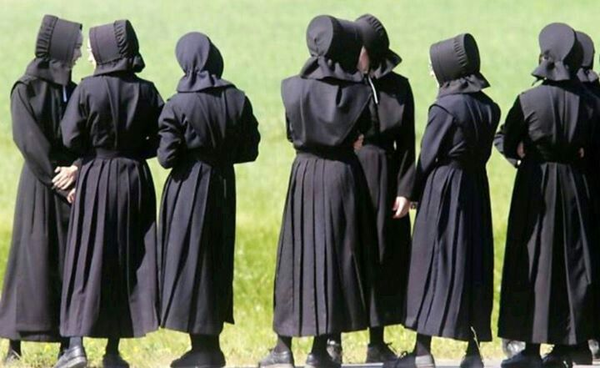
The western world’s preference for wearing black to funerals is also common for Amish mourners. Most Amish funeral attendees wear the same Amish church day clothes that they use for church, which in the case of men is black. Amish women also usually wear black dresses to a funeral.
After the funeral, normal dress codes apply, but the immediate family of the deceased will continue to wear black for a year. This is to signify that they’re in mourning. However, their emotions will be subdued, and not displayed publicly.
Simple Burial Markers for Simple Lives
Just as the Amish like to keep things simple in life, so it is with death. They bury their loved ones in cemeteries on their own land, with as little fuss as possible. Tombstones carry only the names, dates of birth and death, and years lived. No other wording is permitted, and no statuettes or pictures are allowed.
In very conservative Old Order communities, plain wooden markers are used instead of gravestones. These are engraved with the person’s initials and the years they lived. The elders in the community keep records of who is buried in which grave.
Do the Amish Have Wakes Accompanied By Food?
Many Amish traditions and customs are tied to food. So yes, the Amish community members enjoy a hearty meal together after a funeral, just as they do at Amish weddings. Some foods that are popular at these get-togethers are soups, casseroles, and pies.
Amish community women carry loaves of bread and bakes for the community meal after the funeral, in wicker bread baskets and pie carriers. They make these and other wicker items by hand according to traditional craft methods handed down for centuries.
Amish family values uphold traditional gender roles, and the women are the caregivers of the community. That means they spend a lot of time cooking and perfecting their baking and basket-weaving skills.
This same dedication goes into every item sold here at Amish Baskets. Everything, from a mail basket for your foyer to hanging file baskets for your home office, is made by hand in the Amish community.
Conclusion
The one sure thing about life, no matter which community you are a part of, is death.
It is, to lend from a popular quote, “the debt that all men (and women) pay”, but the approach to death and what lies beyond differs widely between cultures.
The Amish people have a great reverence for life and a stoic attitude toward death. This is borne from their deep belief in the will of God. It’s their faith that carries them through all of life’s trials and helps them face the inevitability of death with grace and fortitude.
Did You Find Our Blog Helpful? Then Consider Checking:
